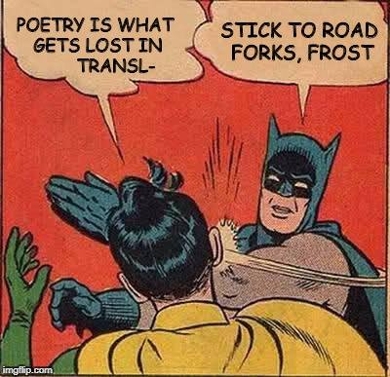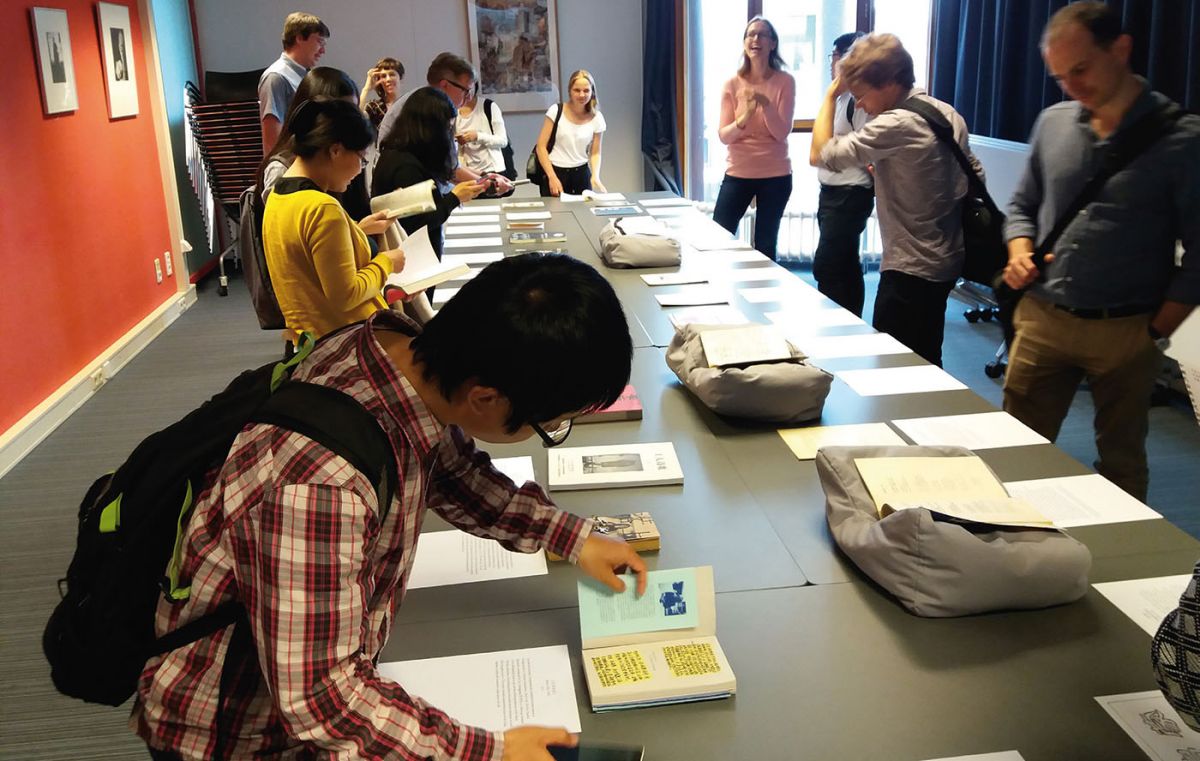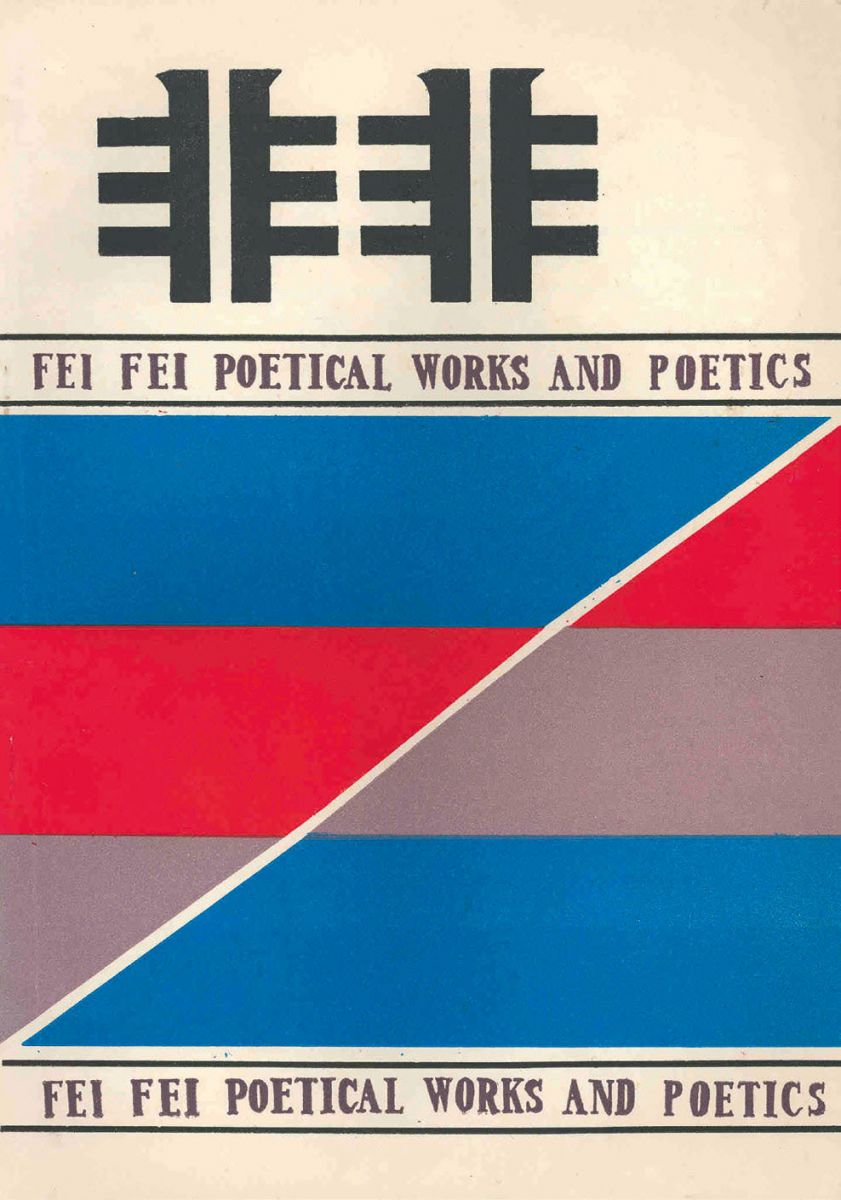Report on a workshop on Chinese poetry and translation
About halfway through ‘The Moving Target’, a workshop on Chinese poetry and translation convened by the authors of this report at Leiden University on 1–2 June 2018, Nick Admussen said he found the community represented here to be inspirational to his work as a translator, a scholar of Chinese poetry, and a thinker on and through translation. As a recent example he mentioned the Journal of Modern Literature in Chinese double (JMLC, issues 14-2 and 15-1, edited by Maghiel van Crevel), with papers presented at Lingnan University last year by several of those who had now come to Leiden. What Nick said about community echoed Eleanor Goodman’s earlier observation that her paper was inspired by an essay in which Nick digs into a mistake he made while translating a poem by Ya Shi and the ensuing correspondence with the author—who did not consider it a mistake. “Translators translate through their libraries”, Joseph Allen said after Eleanor’s paper. But it is equally true that translators translate, and scholars write, through personal relationships with one another. The topic of Chinese poetry and translation is a case in point, and the workshop reaffirmed that the community in question is, well—kind of happening right now.
In this way, translation and writing about translation are even more intertextual and relational than is commonly assumed, and our meeting bore this out. Participants comprised poets, translators, and junior and senior scholars from PhD students to emeritus professors affiliated with thirteen universities in eight countries on four continents, with fifteen papers selected from close to forty responses to an open call. Topics ranged from a queer-feminist engagement with some of China’s newest poetry to a philologico-philosophical approach to some of its oldest, from Charles Baudelaire and Paul Celan in Chinese to the Song-dynasty lyric in English—and yet all became part of one ongoing, expanding conversation.
So how does this hang together? Of course, we could have chosen to tread safer ground than the vast, fissured spaces offered by the triptych of poetry + translation + Chinese. For instance, by limiting ourselves to a subgenre, a historical period, or the good old question of how to reconcile the phenomenon of poetic form with the arbitrariness of the sign across languages. But what we were after was precisely the un‑safeness offered by leaving things wide open between three words-and-things people have talked about (and will continue to talk about) forever—and then the dialogue that this might yield.
First, the horizon of translation has widened over the past decades, and translation studies is a bubbly, contested, interdisciplinary enterprise whose diversification worries some and thrills others. Witness, for example, discussions of the translational turn in the humanities. Second, as we observed at Lingnan University and in JMLC last year, coupling translation with poetry will trigger claims the size of office blocks, all the way from Robert Frost—censored here, as in Corine Tachtiris’ astute visual summary of the debate (fig.1), which accompanies this report—to Eliot Weinberger’s “Poetry is that which is worth translating”, in his Nineteen Ways of Looking at Wang Wei. Third, add Chinese to the mix, and things get even better. The script and its myths and truths, the question of whether texts used at the imperial court in antiquity are at all relatable to what today’s migrant workers post on social media beyond the fact that both are called ‘poetry’, the stubborn, sheer specialness of the genre in various Chinese settings, and so on.

So the last thing we aspired to was full coverage (a scary notion at any rate). Instead, we trusted the triptych’s ability to make us visible and legible to one another and we worked toward establishing connections. One crucial condition was everyone’s commitment to submitting a full draft paper six weeks ahead of time—and then reading everyone else’s full draft paper at some point in those six weeks. Thus, presentations were brief, with authors just summarizing key points, responding to initial written comments from the conveners, and saying what they would like to get feedback on. This then led up to the real gig, meaning extensive discussion of each paper based on the prep work done by the other workshoppers—and, increasingly as we went along, the exploration of connections between the papers.
We worked through eight papers on day one and seven on day two. Both days concluded with roundtable sessions kicked off by Wilt Idema (Harvard University and Leiden University), which helped us realize how much we were not doing (see coverage disclaimer, above; but a useful realization nonetheless). But also, complementing the discussions of individual papers, they showed what might be some of the nodes of the conversation: key concepts that kept recurring and that our work was apparently organizing itself around. These included norms, ethics, and functions of translation (with functions including uses and effects, e.g., what happens in the target culture), valuation (e.g., asymmetrical power relations between source and target), but also the all-pervading presence of gender issues—in what we study and how we study it, right up to the workshop itself—and a vision of translation as creative nonfiction. The latter offered plenty of space for the time-honored genre of reflection by the translator on their strategies, choices, and mood swings.
Looking forward towards the edited volume we intend to publish (Amsterdam University Press, 2019), the challenge now becomes creating sensible chapter groupings our key concepts can run through. The sequence of the papers during the workshop loosely traveled from ‘Then’ to ‘Now’ and from interlingual to cultural translation, but the dynamic of the conversation gave us the conceptually stimulating design for the book we were looking for—which is what we offer in this report. Of course, multiple groupings of this kind could have resulted from the process that started with the call for abstracts, and we claim no necessity or inevitability or self-evidence for the table of contents now emerging. Nonetheless, the tentative line-up for publication we drew up when debriefing works toward a whole that is more than the sum of its parts, and will interface well with (Chinese) translation studies as well as (Chinese) literary studies. Below, with apologies for the enumerative mode we are about to enter, we introduce the papers along these lines, in three sections provisionally called ‘The Translator’s Take’, ‘Theoretics’, and ‘Impact’.
‘The Translator’s Take’ opens with Jenn Marie Nunes’ (Ohio State University) unconventional renditions of poetry by Yu Xiuhua, who catapulted to fame when her blog went viral in 2014—and an elaboration of Jenn’s queer-feminist translational approach. This is followed by poet and translator Eleanor Goodman’s activist perspective on the work of poetry and of translation, noting that literary translation does many things, from enabling the practice of comparative literary studies to the representation outside China of poetry by Chinese migrant workers in today’s global-capitalist world. Next, Joseph Allen (University of Minnesota) takes the ‘Take’ back—and forth—across great distances in space and time, illustrating a range of practical and theoretical issues that come to the fore in his new, in-progress translation of the Shijing (also known as the Classic of Poetry or The Book of Songs), especially intralingual interpretation and commentary. We then bounce back to the contemporary in Christopher Lupke’s (University of Alberta) paper on translating poet Xiao Kaiyu, with special attention to the ‘difficulty’ of this poetry and its foreign inspirations in the source text, as one example of the catalytic effect that translations of foreign texts have had on modern Chinese poetry per se, a topic that returns in the next section.
‘Theoretics’ starts with Nick Admussen’s (Cornell University) proposal of embodiment as a concept that challenges dated yet popular assumptions of objective method and linguistic interoperability as cornerstones of (Chinese) poetry translation. Next, Jacob Edmond (University of Otago) asserts the—generally neglected—importance of poetic theory in the practice and the study of translation, with reference to Russian formalism and Bei Dao’s translations of Boris Pasternak. Zhou Min (who recently obtained her PhD from the Chinese University of Hong Kong) investigates the tendency for translators into English to narrativize their translations of Song-dynasty ci poetry, in contradistinction from a widely assumed opposition of lyric and narrative poetic modes. Focusing on Qu Yuan, known as ‘China’s first poet’ even though his life in the Kingdom of Chu predates the empire, Nicholas Morrow Williams (University of Hong Kong) raises the fundamental question of word-level consistency in translation—and says no. ‘Theoretics’ concludes with a paper by Lucas Klein (University of Hong Kong) that complicates and reorients the authenticity claims that have been built into the discourse around both the Shijing and migrant worker poetry, a discourse that contains many moments of intralingual, interlingual, and cultural translation.
Section three, ‘Impact’, begins with Liansu Meng’s (University of Connecticut) linkage of Chen Jingrong’s influential translations of Baudelaire to Chen’s development of her own eco-feminist poetics in the mid-twentieth century. Another debt owed to translation comes to the fore in Chris Song’s (Lingnan University) discussion of the Chinese-language debut of American modernist poetry in Hong Kong and its effect on the local poetry scene, from the early years of the Cold War era onward. The postwar Taiwanese poetry scene is a prime example of the fact that translation and its impact come in ‘vertical’ (or indigenous) varieties as well as ‘horizontal’ (foreign) ones, and Tara Coleman (LaGuardia Community College) employs the notion of lyrical montage, with reference to film theory, to consider Ya Xian’s poetry in terms of a juxtaposition of equivalences rather than an opposition of ‘the original’ and ‘the translated’. Joanna Krenz (Adam Mickiewicz University) reads three dueling translations of Celan into Chinese for what they reveal about debates on poetry and poetics, and on translation, in mainland China today. Rui Kunze (University of Trier) traces the various cultural translations of Liao Yiwu’s poetry into English and German, in a tight entanglement of literature and politics that starts with the suppression of the 1989 Protest Movement in China and extends to a complex dynamic engendered by publishers, prize institutions, and prestigious cultural figures, revealing the difficulty of communicating trauma between East and West. Maghiel van Crevel (Leiden University) shows that Chinese-to-English offers a fascinating case study for the genre of the multiple-author translation anthology, because of continuing tumult on the Chinese poetry scene, foreign readers’ unfamiliarity with this poetry, and profound changes in the positionality of anthologists in the early twenty-first century.
There is much to unite these arguments and more to interlink them, within and across the sections. If the key concepts identified above and the groupings that emerged from the workshop share any underlying themes, these include a resounding affirmation of what we know about binaries in the humanities: they usually don’t work. This is not unrelated to our plans to organize the contents of the book under the three section headings outlined above. As in Daoism, where it is the three that gives birth to the ten thousand things—after being engendered by the two and the one and, before that, the Dao—in our volume’s title a triptych also produces a myriad: poetry + translation + Chinese.
The move to push past binaries, then, explains the title of this report, ‘The Weird Third Thing’—which will hopefully metamorphose into the volume’s introduction once the revisions are in and the manuscript is ready for submission. The specifics of the Weird Third Thing come from an anecdote Jenn related during one of the roundtable sessions. In the ‘Mamma Mia’ episode of the American sit-com 30 Rock, comedy writer Liz Lemon persuades her boss, Jack Donaghy, to tell his long-lost birth father the truth of his identity. “You’re gonna be okay”, she tells Jack: his father will either reject him or embrace him. “One of those two things is gonna happen. There’s no weird third thing.” Liz and Jack orchestrate a contest of three potential fathers (à la Mamma Mia! – hence the episode’s name) in which the true father will be revealed. What happens, however, is neither all-obliterating rejection nor all-healing embrace. Instead, it turns out Jack’s real dad . . . needs a kidney transplant. And guess who he is looking to.
Isn’t there always some weird third thing—not least when dealing with translation? A collection of Chinese and Anglophone poets ‘in mutual translation’, edited by Yang Lian and W.N. Herbert, is called The Third Shore, and as Tara Coleman reminds us in her paper, for Walter Benjamin the meaning of a word exists in a third space beyond (but not above) the two languages that meet in translation. Translation’s proximity to transplantation troubles our reliance on simplistic affects of love or rejection. We are not sure which of our categories—poetry, or translation, or Chinese—is the weird third thing, or that any one of them should always be (they could take turns, right?). But we know that there being a third thing is trouble enough, and a wonderful kind of trouble. Thirdness destabilizes the symmetry of the binary, opening up multiple possibilities. There may be two sides to a coin, but there are more than two sides to a coinage, as there are usually more than two sides to an argument—especially an academic argument. The weird third thing relinks translation to Homi Bhabha’s ‘third space’ and the ‘in-between’ of postcolonial theory, and it articulates our approach: exploratory, in progress, embracing of uncertainty, and nimble, mobile.
Thirdness also means there is more than a simple ‘right’ and ‘wrong’, with obvious, immediate relevance to translation. To what extent is the role of the scholar of translation to judge translations right or wrong—technically, ethically, or otherwise? Can a translation wrong a person or party, and can it be right if it does so? If a translation is right, is its rightness forever and for always, or only for a certain purpose, time, or place? What rights does the translator have to respect in order for their translation to be right? What rights does the translator have, full stop—or rather, full question mark? What are the valences of aesthetics, ethics, and philology as they intersect in translation? How audible is the homophony of right and write—and of rite, in a vision of a text’s translation as a rite of passage: think recognition, and entry into another community than that which now starts being called the source? Our questions are not uncommon in the field of translation studies as it turns to ethics and aesthetics, but we see the Daoist weird third thing producing its myriad before us. This stuff explains the full name of our book, which we intend to call Chinese Poetry and Translation: Rights and Wrongs, after a suggestion by Jacob when we were brainstorming titles.
Rights and Wrongs may sound like a binary at first, but it is ‘rights and wrongs’, after all, not ‘right or wrong’. Like the surface dualism under which translation’s thirdness hides, then, our subtitle signals polyvalence, a multifacetedness that insists that the binary would be one of the wrongs. Or, there is no one correct or ‘right’ translation, even if there may be no end to wrong translations. This is not to say that we do not critically assess translations, but we do so with the awareness that we are at some level doing it wrong ourselves if we fail to recognize that the exploration of translation’s uses is as interesting, and as important, as the exploration of its ontologies. Juxtaposing ‘rights’ and ‘wrongs’ in our title can reveal their duality to be structurally in flux, and productively unstable.
In this way, we hope our title will do what some of the best (Chinese) poetry and some of the best translations do. Ernest Fenollosa, whose notebooks played a crucial role in Ezra Pound’s vision of Chinese poetry and of modernism, wrote that in the “process of compounding, two things added together do not produce a third thing but suggest some fundamental relation between them”. We see this to be that weird third thing.
We thank the Leiden University Institute for Area Studies (LIAS), the Leiden University Foundation (LUF) / Mr. J.J. van Walsem Fonds, and the International Institute for Asian Studies (IIAS) for funding the workshop; we thank Corinne Tachtiris for permission to use her Batman-inspired rejoinder to Robert Frost for publicity; we thank Marc Gilbert and his colleagues in the Special Collections department of the Leiden University Library for providing a perfect venue and hosting a pop-up exhibition of the unofficial journals that have played a key role in the development of contemporary mainland-Chinese poetry (figs. 2 and 3), and for providing access to the full collection to Chris and Liansu, who arrived early to make the most of their visit; and we thank Wang Mi and Zheng Yanming for expertly guiding our guests through Leiden and handling logistics, without missing a single paper.

